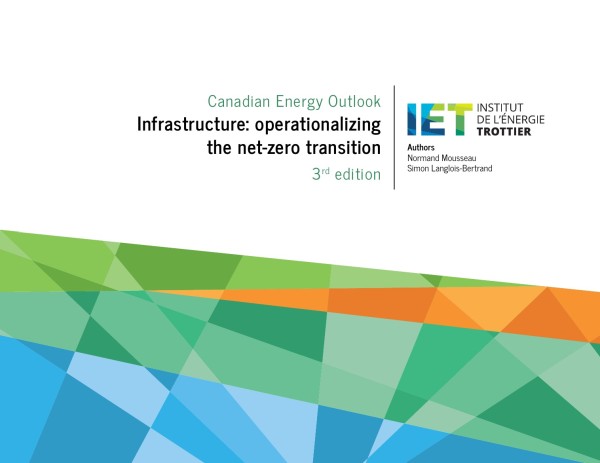Publications
Infrastructure : Operationalizing the Transition
Second thematic report of the Energy Outlook, 3rd edition
The Canadian Energy Outlook project describes and analyzes the transformations required to energy services in order to meet net-zero objectives in Canada, where these services are strongly associated with quality of life and standards of living, from transportation of people and goods, to heating and cooling buildings. Following two main reports - The State of the Energy and GHG Emissions in Canada and Pathways for a Net-Zero Canada - and a first thematic report on the Decarbonization of Off-Road Transport in Net-Zero Pathways, this publication presents the challenges related to infrastructure.
As shown by the modelling underlying the IET's Canadian Energy Outlook, Canada's climate objectives can only be achieved through major technological changes affecting all energy sectors. These same models do not, however, describe how new energy technologies will transform our daily lives, nor how their deployment can be achieved in a realistic manner.
Achieving carbon neutrality will therefore require the widespread electrification of services, which will obviously necessitate a significant increase in electricity production, but also a profound change in the technologies that support energy services in almost all economic sectors.
To better understand the operational challenges associated with Canada's transition to a carbon-neutral economy, this report explores the nature of the sectoral transformations – buildings, transportation, energy production, CO2 capture and sequestration (CCS), etc. – that Canadian infrastructure will need to undergo to enable us achieving carbon neutrality. Drawing on the latest technical and economic modelling results and the latest technological advances in low-carbon energy production and use, it describes specific pathways for deploying these infrastructures. It thus seeks to make the structural challenges that will accompany the energy transition in a primarily Canadian context more concrete, while integrating the international context where appropriate.

